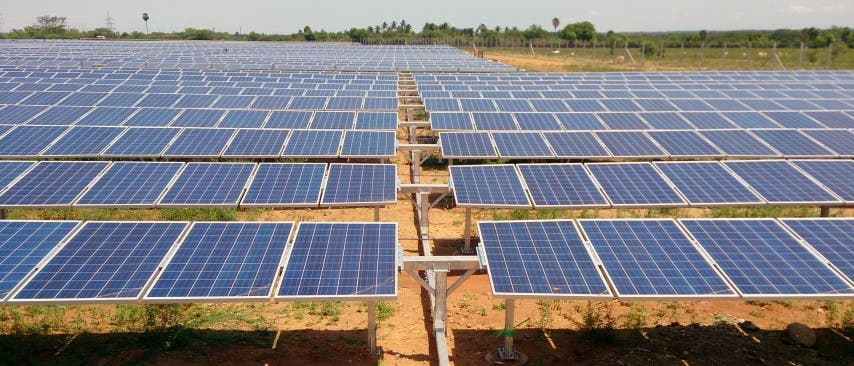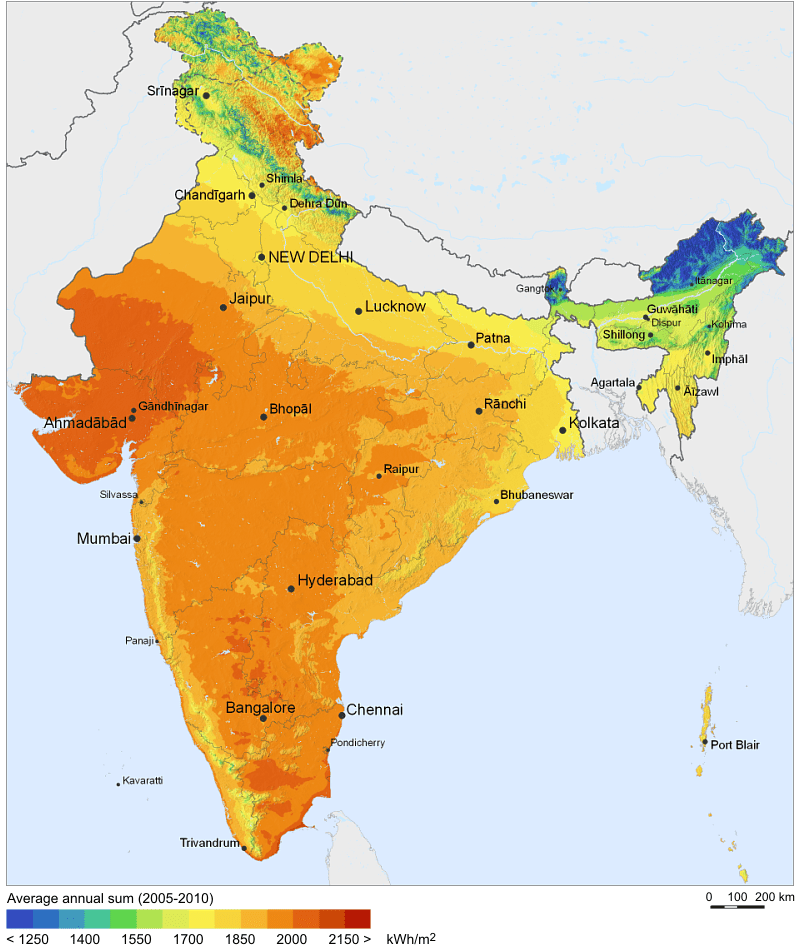India’s massive investment into solar energy is already starting to pay off – much earlier than anticipated.

With about 300 clear, sunny days in a year, India is one of the best countries to opt for solar energy. The solar energy available in a year exceeds the possible energy output of all fossil fuel energy reserves in India. Also, India is the country with the most people without electricity – 300 million. Adding two and two together, it was clear that solar energy will be big in the country and the government seized the moment, targeting US$100 billion of investment and 100 GW of solar capacity by 2022.
In time, the project will generate clean energy saving lots of money in the process but for now, solar energy is still not as cheap as fossil fuel energy… or is it?
According to one of the world’s biggest audit companies, KPMG, solar prices are now within 15% of coal. If the trend continues, solar energy will actually be 10% cheaper than coal energy by 2020 – much earlier than previous studies suggested.
To make things even more exciting, current trends continuing is a pessimistic scenario. Many expect solar to become much cheaper fast, while coal becomes scarcer.
“Solar is very competitive,” said Vinay Rustagi of renewable energy consultancy Bridge to India. “It’s a huge relief for countries like India which want to get more and more solar power.”
Prime minister Narendra Modi has made access to electricity a top priority, setting the ambitious goal of 100 GW of solar energy by 2022.
“Solar technology is evolving, costs are coming down and grid connectivity is improving,” he said. “The dream of universal access to clean energy is becoming more real. This will be the foundation of the new economy of the new century.”

He also made his views loud and clear at the climate summit in Paris (COP21), where he rallied 120 of the world’s nations under a “solar alliance.”
“What we are putting in place is an avant garde of countries that believe in renewable energies,” he told a press conference in Paris. “What we are showing here is an illustration of the future Paris accord, as this initiative gives meaning to sharing technology and mobilizing financial resources in an example of what we wish to do in the course of the climate conference.”
Coal currently makes up 60% of India’s energy consumption. To make matters even worse, India’s coal is generally one of the worst kinds, with a high ash content that releases dust particles, toxins and metals into the atmosphere. But Modi doesn’t want to phase out coal just yet – on the contrary, he wants to grow it alongside solar.
“It’s important to emphasize that coal is going to remain a crucial part of India’s future,” said Sasha Riser-Kositsky, an associate at Eurasia Group.


